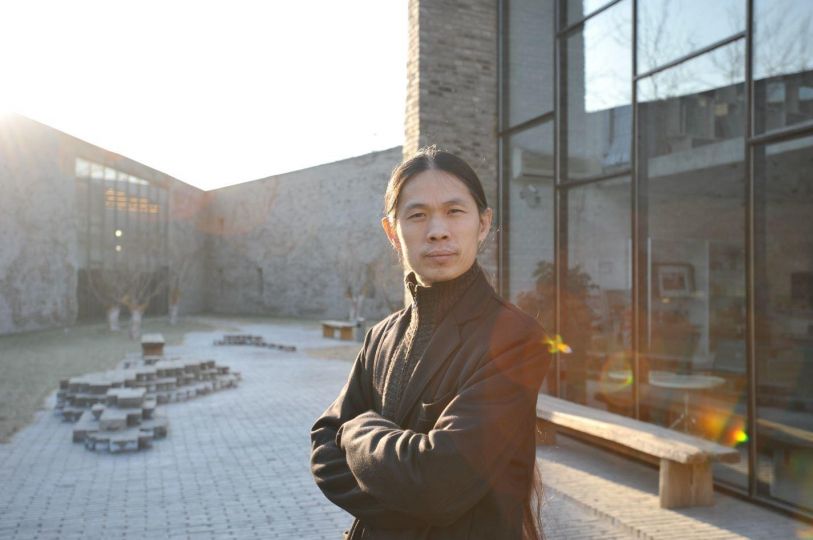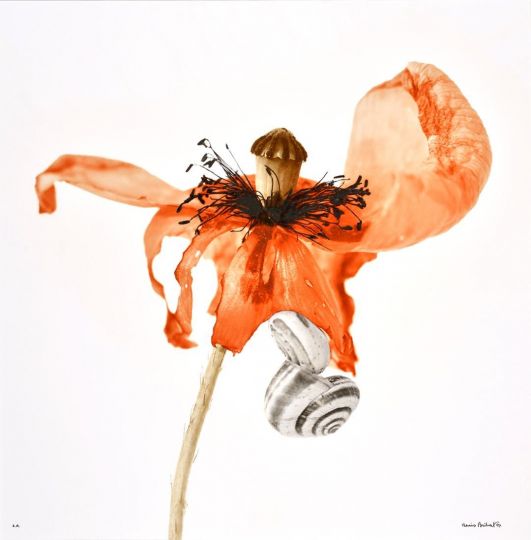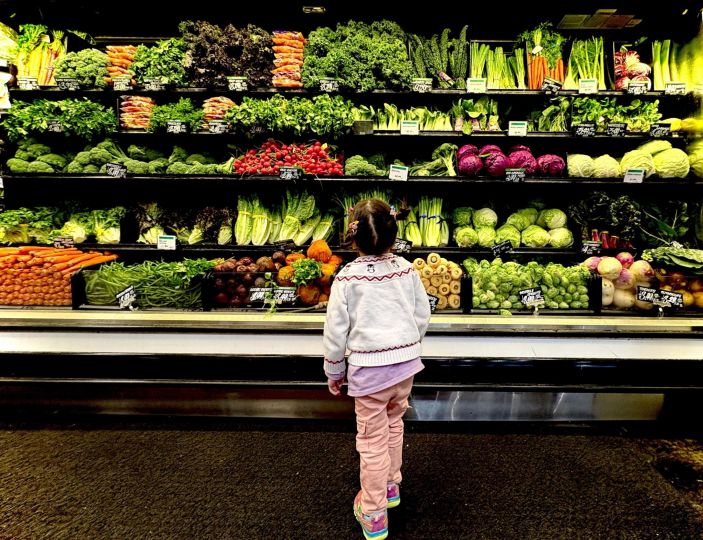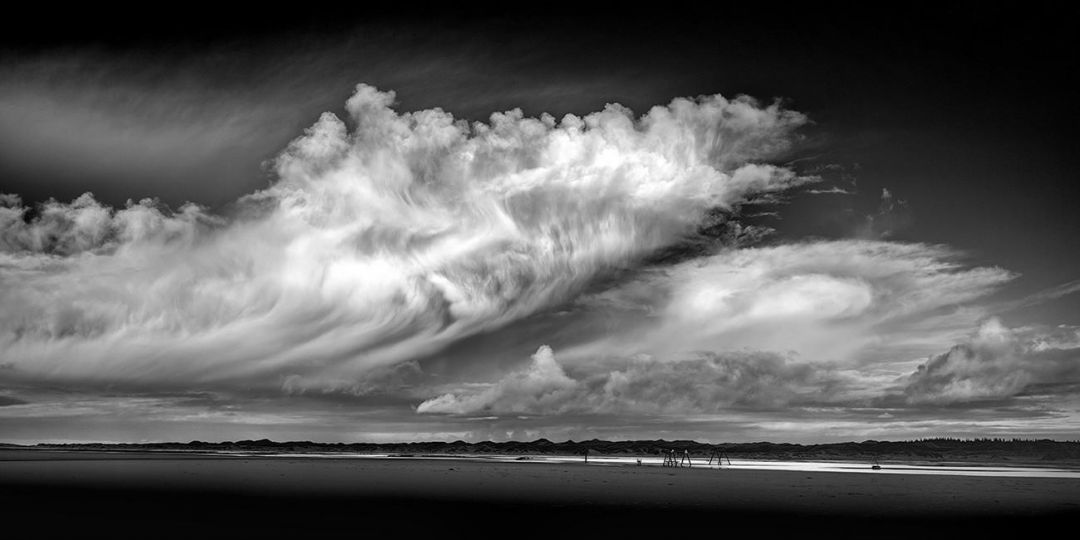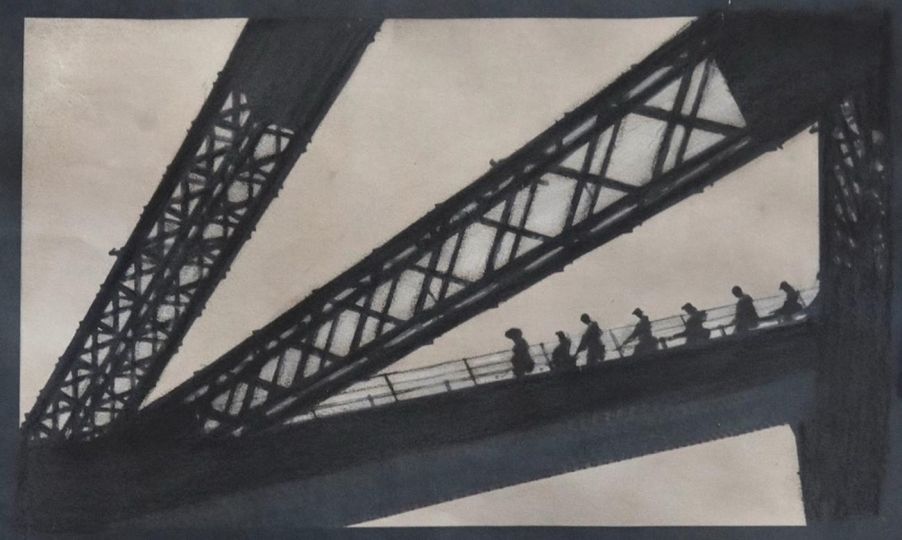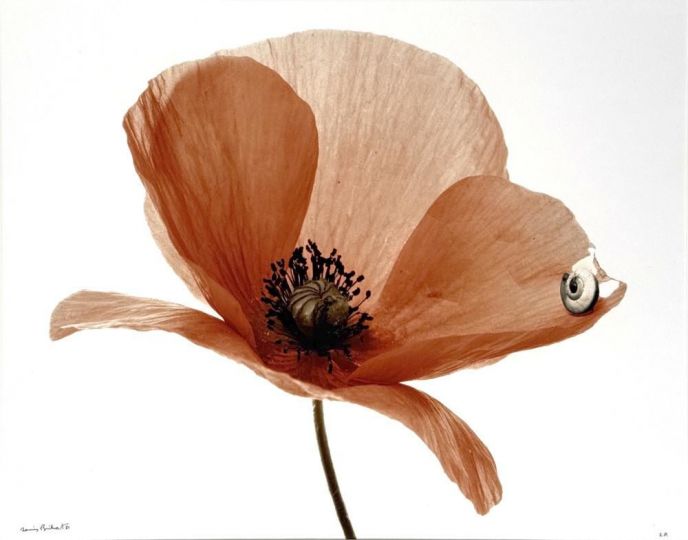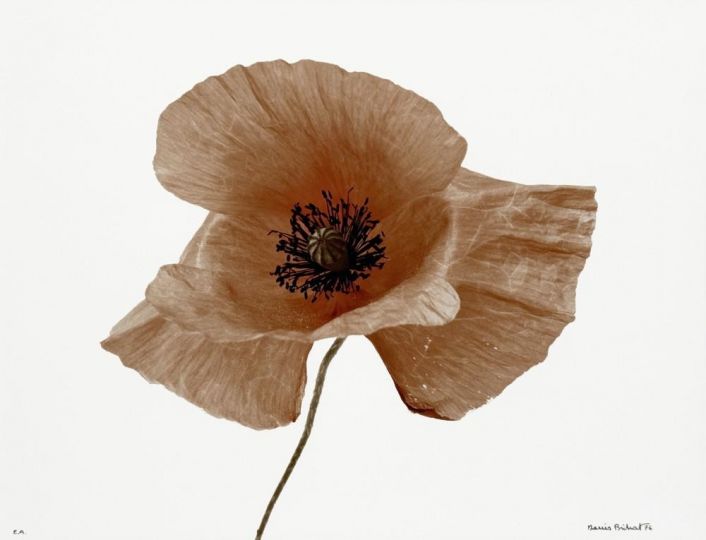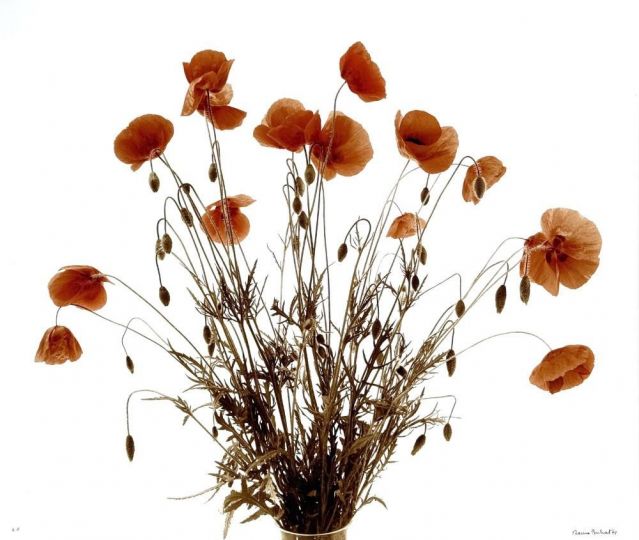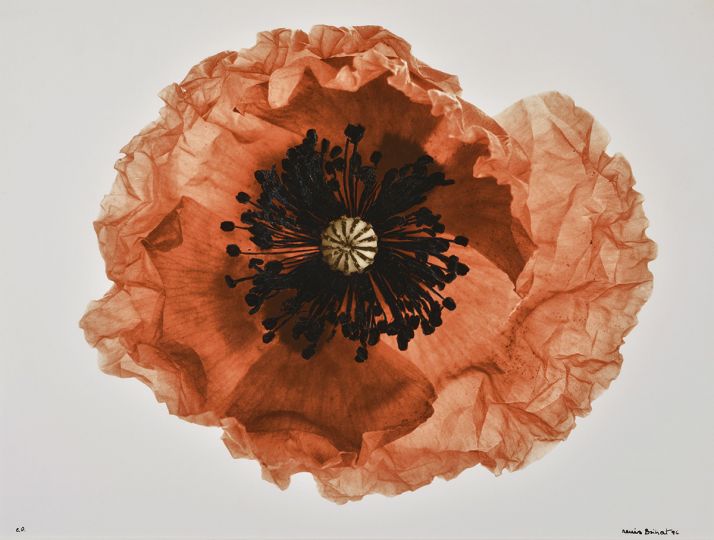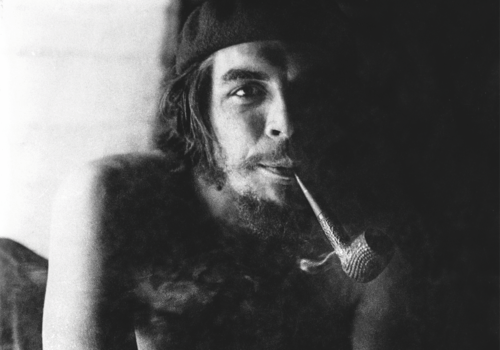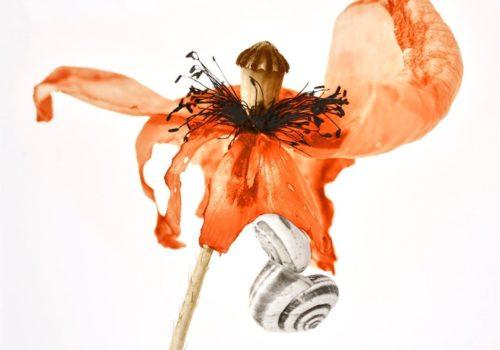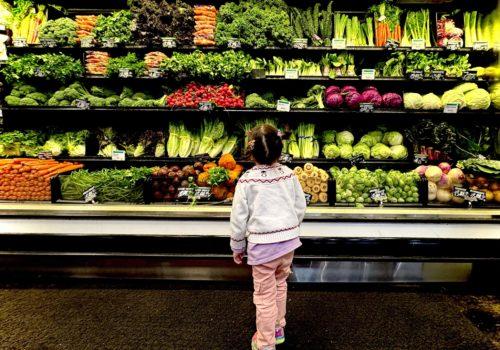Co-founder of the Jimei x Arles International Photo Festival and one of the leading figures in Chinese photography, RongRong spoke to our correspondent Marine Aubenas about the local scene, the establishment of the festival in Jimei and the development of a festival that is celebrating its tenth anniversary this year.
What is the place of photography in China? In terms of the market? Public reception? Museums, festivals, or fairs dedicated to it?
Rong Rong: Although young, the art of photography is vibrant and ever-changing. In terms of public acceptance, photography has become a part of daily life and cultural consumption. Whether sharing life moments on social media or viewing works at photography exhibitions, public interest and participation in photography have increased. However, in China, photography is not considered a mainstream art form. Despite the 21st century being deemed the “age of images,” many people remain “image illiterate,” lacking training in this area in both life and education. Additionally, the concept of “original photography” is not yet widespread among Chinese audiences, requiring more exhibitions to enhance their understanding.
I feel that the ecosystem of Chinese photography art is continuously developing with promising prospects. Besides the Three Shadows Photography Art Centre, many like-minded, non-governmental photography organizations have emerged domestically, such as Guangshe, the Xie Zilong Photography Museum, the Chengdu Contemporary Image Museum, Yingshang Photography Book Archive, and Fotografiska from Sweden. This is a positive phenomenon, with diverse voices arising from civil sectors, alongside government-established professional photography museums like the Lishui Photography Culture Center. Furthermore, the PHOTOFAIRS Shanghai is about to celebrate its tenth edition. I am full of anticipation for the flourishing development of China’s photography scene in the future.
Why did you choose the city of Xiamen to host this festival? How do the city and the festival benefit each other?
On one hand, the establishment of Three Shadows Xiamen Photography Art Center in Jimei New Town in 2015 was made possible under the invitation and support of the Jimei District Committee and Government in Xiamen. On the other hand, Jimei, located in Xiamen, Fujian, is my hometown. It is in the South, distinct from Beijing, and it deals with a different audience. We want art display not to be confined to large cities or the capital, and to spread it from Xiamen to Southeast Asia. Jimei District, as the hometown of the Chinese entrepreneur and educator Mr. Tan Kah Kee, it has a century-old academic village, carries rich cultural and historical significance. The establishment of various colleges in Jimei, such as Jimei University, Huaqiao University, and the Xiamen Academy of Arts and Design, Fuzhou University, initiated by Mr. Tan Kah Kee, has gathered many young, vibrant people. Locating Jimei x Arles here further stimulates a youthful photography ecosystem and energy.
From Beijing to Xiamen, we have consistently strived to create a top-tier platform for the display, promotion, and international exchange of Chinese contemporary art photography. Jimei x Arles International Photo Festival acts as a cultural bridge, bringing the best photography art resources from both international and domestic realms to Jimei, capturing global attention. Over ten editions of the festival, we have held nearly 300 high-level photography exhibitions, inviting over 600 artists worldwide, with 30%-40% from overseas and more than 90% from outside Fujian. In addition to collaborating with Arles, France, the festival featured exhibitions from Asian countries like Korea, Thailand, India, the Philippines, Singapore, and Malaysia, showcasing works by internationally renowned art masters including Joel Meyerowitz, René Burri, Nobuyoshi Araki, Daido Moriyama, Mika Ninagawa, as well as artists from Taiwan such as Chen Chuanxing, and artists from mainland China like Zhuang Xueben and Luo Bonain. Furthermore, the festival collaborates with top-tier Chinese art institutions like the China Academy of Art, Central Academy of Fine Arts, Tsinghua University, and Luxun Academy of Fine Arts, offering special exhibitions. Every year, many photography enthusiasts travel from Beijing, Shanghai, Guangdong, Zhejiang, and even from overseas to attend. It can be said that Jimei x Arles has not only enhanced Jimei’s fame both domestically and internationally but has also made Jimei an important window for international artistic exchange, receiving heightened attention and recognition from many professional and art media outlets.
Despite the need for professional venues placing the main venue of Jimei x Arles International Photo Festival in Jimei’s newly developed New Town, we have always hoped for photography to connect with the life and local culture of Jimei’s traditional area, Xiamen, and its surroundings. This is realized through initiatives like the “Local Actions” section, the “Isles Project” launched last year, and this year’s “Parallel Exhibitions,” deeply rooted in the local context. Over the years, Three Shadows Xiamen and Jimei New Town have grown together, becoming a cultural landmark in Xiamen and southern China, leading and promoting contemporary culture and art in Xiamen. Besides hosting Jimei x Arles International Photo Festival annually, Three Shadows Xiamen also organizes nearly 20 high-standard art exhibitions each year, accompanied by a rich array of cultural activities like sharing sessions, workshops, screenings, and lectures.
How does the partnership with Arles work? What is its history?
The Jimei × Arles International Photo Festival was launched in 2015 in collaboration with the former director of the Rencontres d’Arles, Sam Stourdzé, and as early as 2010, the Three Shadows Photography Art Centre initiated the ‘Caochangdi PhotoSpring–Arles in Beijing’, which started the cooperation with the Rencontres d’Arles.
In June 2007, inri and I founded Three Shadows Photography Art Centre in Caochangdi, Beijing. Three days after the opening of Three Shadows, inri and I were for the first time invited to the long-awaited Rencontres d’Arles, France. Two years later, in the winter of 2009, I joined an organization called Oracle along with Bérénice Angremy, a French curator who had long been working on contemporary art in Beijing, and who was also the curator and initiator of the Dashanzi International Art Festival at the time. We travelled to Europe to hold discussions with photography experts from all over the world, and together we went to Arles, France, where we attended an international curators’ conference. At the conference, we met François Hébel, the director of the Rencontres d’Arles at that time, and talked about the idea of bringing the Rencontres d’Arles to Beijing, with the ultimate goal of bringing more people outside the professional art world into Caochangdi, an independent art zone, to learn about the spirit of an art district, and the local architecture and history while it was facing demolition. This proposal gained support from the Rencontres d’Arles and many galleries in Caochangdi. It proceeded smoothly, and just four months later, the inaugural “Caochangdi PhotoSpring—Arles in Beijing” was unveiled. Over 20 galleries and art institutions in Caochangdi collaborated to present photography-themed exhibitions by artists from home and abroad. The Arles Festival Discovery Award and Three Shadows Photography Award nominees and winners were exhibited at the Three Shadows Photography Art Centre. The collaboration lasted three years and helped preserve the Caochangdi art district.
In 2015, invited by the Jimei District of Xiamen City, the Three Shadows Photography Art Centre established a new space on Xinglinwan Road at Jimei New Town. At the time, the newly developed Jimei New Town was open and fresh, and the district government hoped that our presence and art activities would attract popularity. However, I felt it was challenging to achieve this alone, so I proposed continuing our collaboration with the Rencontres d’Arles. Sam Stourdzé, the then-new director, had visited the Caochangdi PhotoSpring and the Three Shadows Photography Art Centre, maintaining ongoing communication. He was pleased with the proposal to restart cooperation in a small city in southern China. When he came to conduct a site visit, Jimei didn’t even have a subway connecting it to the city, but Stourdzé confidently said that was not an issue, recalling how, forty years ago, transportation to Arles from other French cities was not convenient either. Today, it still is a three-hour train ride from Paris to Arles. We were seeing a long-term future vision.
This year marks the tenth Jimei x Arles, with Christophe Wiesner, the current director of the Arles Festival, attending in person, we maintain close communication. Compared to the Rencontres d’Arles, we are still young and there are certain gaps, such as the number of professional curators and the time devoted to organizing an exhibition. This reflects our incomplete photographic art ecosystem. However, these challenges have become a driving force for our actions. Despite our level differences with international festivals, our exchanges are equal, since we have many excellent artists. This is especially obvious in the context of cooperation with the Rencontres d’Arles.
What motivated you to create the Jimei Festival, and what is your vision?
It is an undeniable fact that it is challenging for an artist’s work to be seen by international curators and other professionals on an individual level. However, platforms like the Three Shadows Photography Art Centre and Jimei x Arles can introduce their work to more people. Our current efforts are merely laying the groundwork to ensure that more people who love this art form receive the attention they deserve.
At the Three Shadows Centre, the number of exhibitions we can host each year is quite limited. However, a photography festival allows us to view works from different countries and artists simultaneously, facilitating gathering, interaction, and dialogue. The annual Jimei x Arles International Photo Festival involves hundreds of artists and dozens of curators, covering nearly ten thousand square meters, and attracting tens of thousands of visitors.
The artists’ creations not only bring visual explorations from around the world but also offer profound reflections and responses to contemporary social culture. I hope that the Jimei x Arles International Photo Festival can not only spread knowledge related to photography but also connect the world through the exchange of visual culture, uncovering contemporary multicultural values.
Every year, 5 to 8 exhibits are airlifted from the Rencontres d’Arles to Xiamen. For Chinese audiences, traveling to the Rencontres d’Arles involves high costs for international travel, accommodation, etc., and this is not easy. Now, these works being brought to their doorstep present a great opportunity for local audiences. Seeing original photography works is very important. Without viewing the originals, one cannot learn to respect photography or understand why an original photo is an artwork. We strive to provide more opportunities like Jimei x Arles, allowing people to see various original works and engage with them.
We also feel very fortunate to be the first private photography institution in China to gain international respect and recognition. Through our collaboration with the Rencontres d’Arles, we have learned a lot. We also recommend Chinese photographers we discover to the international stage, with winners of our Discovery Award being invited to exhibit in Arles the following year. If you visit the Arles festival, you’ll notice that the voice of Chinese photography is quite faint. Having our photographers exhibit in Arles and stand alongside artists from other countries is extremely important.
Meanwhile, “Jimei x Arles” originated from “Arles” but aims to develop characteristics distinct from “Arles.” Besides exhibitions from Arles and the Discovery Award inspired by the Rencontres d’Arles. The festival also initiated several sections, including the “Curatorial Award for Photography and moving image” to discover and nurture curators in related field, the “Greetings from Asia” section to observe the creations of other countries in Asian, and the “Crossover Photography,” section which showcases crossovers between diverse art fields and photography. Being in southern China, we hope Jimei x Arles can start from a ‘local’ perspective, reaching out to Southeast Asia and maintaining close interactions with photographers from Hong Kong, Macau, Taiwan, and Southeast Asian countries, and be a photo festival with Asian characteristics.
What have been the major developments of the festival since its creation in 2015? Which ones are you proud of today? And which ones are you planning to implement to make you proud in the future?
Being able to persist in doing one thing is already quite an achievement. The Rencontres d’Arles in France has been held for 55 years, and in terms of time, that’s already a remarkable accomplishment. For example, I am currently in Kyoto, where there are many very small shops that have been around for 200 to 400 years. It’s incredible and admirable. I hope to adapt to changes and remain constant. In this era, the development of the world and the information updates occur every decade. We have dreamed a dream and realized a dream. Finally, I want to say that ten years is a milestone and a new beginning. On the road ahead, we look forward to continuing to explore, dialogue, discover, and connect the infinite possibilities of the world with more friends through the art of photography.
The development of the world and the change of information are too fast in this era, and there are some things that are still waiting for time to give out a verification. Some things have to stand up to the polishing of time. Jimei × Arles has been able to move into its 10th year, and I believe it is because of the ideals and aspirations towards photography of so many people. Only with everyone’s participation and hard work, can it be possible!
What are the new features this year for the 10th edition?
Jimei x Arles focuses more on deeply integrating with the local culture. This year, the “Parallel Exhibitions” connected with other art venues in Xiamen, and the “Isles Project” entered its second year. Since last year, it has linked multiple cities’ cultural and art spaces through exhibitions, events, and marketing activities, delving into the urban fabric and playing the role of an information dissemination “hub.” This year, the Isles Project upgraded both in scope and depth, with five distinctive curatorial routes highlighting the diversity of regional cultures.
Jimei x Arles and Xiaohongshu Photography jointly launched the 2024 “Jimei x Arles Discovery Award,” which has been working for ten years to discover and promote Chinese image artists. This year’s shortlisted artists come from mainland China, Hong Kong, Canada, the United States, and other places. The Jimei x Arles “Curatorial Award for Photography and Moving Image,” jointly established with Chanel, for the first time expanded its proposals’ open call from mainland China to include Hong Kong, Macau, and Taiwan regions. Yi-Ning LIN (Michelle) and Chia-Shin YANG from Taiwan won the award with their programme “Metal Odyssey,” offering a unique dual perspective from both artist and curator; and this award launched a special programme “Curatorial Seminar”, a non-profit course combining with the opening week. The “Portfolio Review Award” was established this year to encourage and commend emerging photography creators.
Vivo, Xiaohongshu, Chanel… You have many major partners. How do you select your commercial partners? What role do they play in the festival’s ecosystem?
We are deeply grateful for the support from various brands in our collaborations and their respect for our art team’s decisions. Our business partners align well with our philosophy, but the unique characteristics of each brand help expand the boundaries of Jimei x Arles.
Chanel is a brand that greatly values the heritage and innovation of culture and art. As the premium partner of Jimei x Arles, Chanel co-launched the “Curatorial Award for Photography and Moving Image” with us in 2021. When creating this project, we unanimously focused on the role of “curator,” which still faces considerable challenges in China’s development. At the time, the identity of a curator was well-known in the West, but in China, not many people understood it, and there were limited pathways and platforms for young people aspiring to enter this field. This award strongly supports curators with prizes, dedicated funding for exhibitions, and offers a series of courses. Chanel not only sponsored the award but also engaged extensively with us in discussions, providing curators with publicity opportunities.
Xiaohongshu Photography, like Three Shadows, aims to voice Chinese photography’s unique perspective while supporting and providing a platform for young artists. As a leading social media platform, Xiaohongshu has a large young audience and a growing number of expressive creators. The collaboration with Xiaohongshu also brings more interaction, bonding audiences closer to us.
The portability and ease of sharing of smartphones have subtly and gradually changed people’s reading habits and their relationship with images. Many smartphone brands are supporting creative mobile photography through organising activities such as photography competitions. vivo encourages everyone to be a creator, advocating for more people to experience the joy of expression through technology. Our collaboration with vivo is in tune with the times, witnessing how technological advancements continually transform the art photography.
How do you choose the exhibitions presented?
We don’t give each year’s festival a specific theme. We encourage diversity and welcome exhibitions from different countries and cultures, hoping to see everyone’s uniqueness. However, we do have our own framework with several permanent sections. For instance, “Exhibitions from Arles” showcases selected exhibitions from the Rencontres d’Arles in France, and the “Jimei x Arles Discovery Award” encourages young Chinese photographers. ” Greetings from Asia” looks at works from other countries in Asia, and the “Crossover Photography,” section which showcases crossovers between diverse art fields and photography. Through these sections, we explore various aspects of photography. As mentioned earlier, the art of photography is young, vibrant, and constantly changing, which also influences some adjustments in our section structure through the year.
Each year, we form an art committee of about five members to select exhibitions for each section. For ” Exhibitions from Arles,” we choose exhibitions from the Rencontres d’Arles, with Christophe Wiesner, the director of the Rencontres d’Arles, participating as a committee member. We receive a list of exhibitions available for touring from Arles, and my team and I visit the festival during its opening to make our selections. The selection criteria include the focal areas of the Arles festival, diverse themes, and geographical variety.
In the “Jimei x Arles Discovery Award” section, curators use a nomination system to select exhibitions, with each curator choosing two artists to hold solo exhibitions. Our choice of curators benefits from Three Shadows’ long-standing collaborations with many curators, focusing on their attention to imagery, past project experience, and professionalism to determine appropriate curators for the Discovery Award. We also strive not to repeatedly use the same curators from previous years.
Overall, we hope to hear diverse voices and see multicultural exhibitions from different countries in our shows.
We notice the significant focus on curation in the exhibitions, particularly with the section dedicated to curation on the ground floor. Is this something you championed?
Curators are undoubtedly an indispensable link in the art ecosystem. Photography doesn’t end with the act of capturing an image; its subsequent presentation is equally important, whether through photobooks or exhibitions. Curators play a key role in bridging the gap between works and their audience, acting as the driving force behind the scenes for artists’ works. Understanding the artist, determining how to present their work, and articulating its meaning are all crucial aspects of a curator’s role. While creators and their works are at the core of the photography ecosystem, it is in fact an interconnected chain involving artists, curators, exhibition spaces, of course the critics, and collectors as well.
The Jimei × Arles “Curatorial Award for Photography and Moving Image Finalist Exhibition” is a product of the Jimei × Arles “Curatorial Award for Photography and Moving Image”, which was co-launched by Three Shadows and CHANEL in 2021. The exhibition is a testing ground for young curators, as well as an opportunity for dialogue and exchange between curatorial proposals and the public and the media through lightweight group exhibitions, in which we can also see the keen insights and creative thinking on social and cultural issues.
In China, curating is still a profession that requires long-term development, but it is gratifying to see this profession being recognized and valued, with more related awards emerging. Curators who won in the past three editions have successfully presented exhibitions and related public programme in Beijing, Shanghai, and Singapore, playing important roles in the contemporary art scene in China. Among them, curators Jiang Feiran, Gan Yingying & Zhou Yichen also participated in organizing this year’s exhibitions of the Jimei x Arles. With the dynamic changes in the photography art ecosystem, the “Curatorial Award” project is also expanding. Through the comprehensive observation of nearly 200 young curators’ practices and thoughts during the award selection process over the past few years, as well as the experience from existing non-profit online courses “Curatorial Master Courses,” we see the importance of curatorial thinking closely aligned with real-world issues and the cooperation and co-creation among curators. This led to the launch of the ” Curatorial Seminar for Photography and Moving Image” this year, an intensive seven-day offline exchange and learning programme that breaks away from the traditional unidirectional ‘teaching and learning’ model, advocating for mutual inspiration and co-learning among curatorial trainees to build a vibrant “community.” While the 100,000 RMB cash prize and exhibition opportunities are more visible, this support is equally important for the development of the field of curating. It also opens new paths for the continuous nurturing of emerging curators in China.
How do you combine your own practice as a photographer with your role as the director of this festival?
As an artist, I may intuitively recognize the urgent needs within the ecosystem of photography, which I deeply love. When we realized the lack of local spaces to amplify the voice of photography in China, inri and I founded the Three Shadows Photography Art Centre in 2007. We then understood the necessity of breaking regional boundaries to establish connections and collaborations overseas, leading to our partnership with the Rencontres d’Arles in France. Making meaningful contributions at specific times is crucial for advancing photographic art. I believe this stems from an artist’s immersive experience in the field, reaching a consensus on the future of photography and the vitality of its future in China. I am also fortunate, through the role of artist as well as the co-director of the festival, to meet more like-minded individuals and establish interactions with pioneers in the industry.
A photograph you’d like to add to your collection, if money and access were no object!
It will be works of Alfred Stieglitz and Jin Shisheng.
Jimei x Arles International Photo Festival 2024
Jimei Art Centre
Bullding 12, XInglinwan Business Contro, Jimoi District, Xiamen
www.rencontres-arles.com/fr/jimei-x-arles-2024international-photo-festival
Three Shadows Photography Art Centre
3F, Bullding 2, Xinglinwan Business
Contro, Jimei District, Xiamen
www.threeshadows.cn/cn

